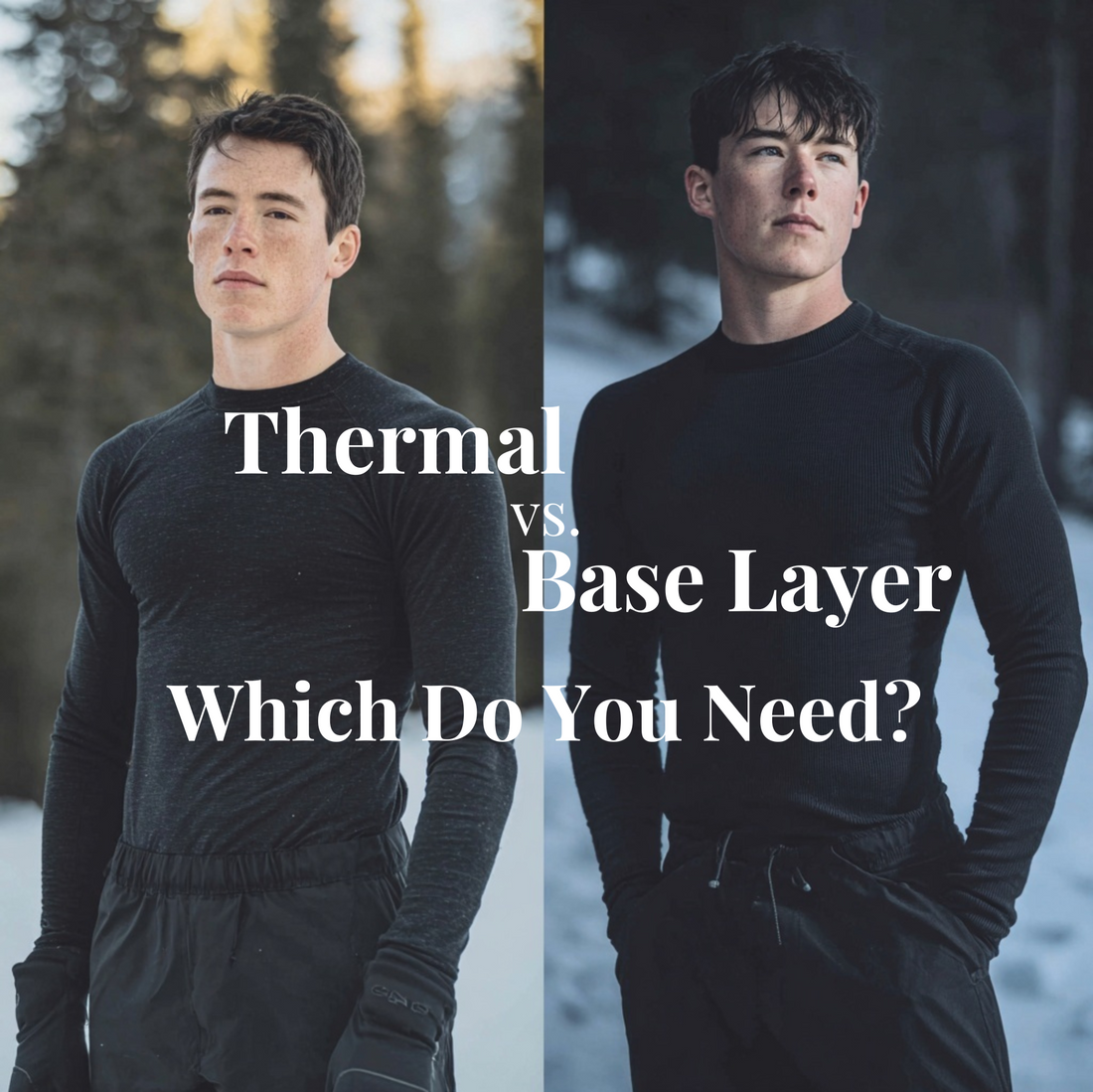
Thermal vs. Base Layer: Which Do You Need?
Share
When cold weather sets in, staying warm isn’t just about piling on clothing—it’s about layering smart. Two key players in your winter wardrobe are base layers and thermal layers, but they’re not interchangeable. Understanding the difference can help you stay warm, dry, and comfortable—whether you're heading out for a hike, running errands, or cozying up indoors.
In this guide, we’ll break down the difference between base layers and thermals, how to layer them effectively, and which option is best for your winter activities.

What Is a Base Layer?

Key Features of Base Layers:
- Moisture-wicking: Keeps sweat off your skin to prevent chills.
- Lightweight insulation: Traps body heat without bulk.
- Breathability: Allows airflow, so you stay warm but not sweaty.
- Snug fit: Designed to hug the body for optimal thermal regulation.
At Silverlyne, our Angora, cashmere, and silk base layers offer unmatched comfort and natural temperature control—perfect for layering under any winter outfit.
What Is a Thermal Layer?
A thermal layer (often called an insulating or mid-layer) is designed for maximum warmth. Unlike base layers, which focus on breathability and moisture management, thermals are all about heat retention.
Key Features of Thermal Layers:
- Thicker materials: Fleece, quilted wool, or down for added insulation.
- Looser fit: Designed to go over a base layer without restricting movement.
- Ideal for extreme cold: Provides extra warmth when temperatures drop below freezing.
Base Layer vs. Thermal Layer: Key Differences
Here’s a side-by-side comparison to help you choose:
|
Feature |
Base Layer |
Thermal Layer |
|
Main purpose |
Moisture-wicking, warmth |
Heat insulation |
|
Fabric weight |
Light to midweight |
Mid to heavyweight |
|
Fit |
Snug |
Relaxed |
|
Best for |
Active movement in cool/cold weather |
Extreme cold or low-activity warmth |
|
Examples |
Fleece, wool, down |
Which One Should You Wear?
It depends on your activity level, environment, and personal warmth preference:
Choose a base layer if:
- You’re engaging in active outdoor activities like hiking, skiing, or errands.
- You need something lightweight under everyday clothes.
- You want moisture control without bulk.
Choose a thermal layer if:
- You’ll be outdoors in freezing temps with minimal movement.
- You want to layer on top of your base for added warmth.
- You’re prioritizing cozy comfort (think lounging at a ski lodge).
Pro Tip: In frigid conditions, wear both! Start with a moisture-wicking base layer, add a thermal layer for insulation, and finish with an outer shell for wind/water protection.
Temperature + Activity Layering Guide
|
Temperature |
Activity Level |
Suggested Layers |
|
45–60°F (7–15°C) |
High activity (jogging, hiking) |
Lightweight base layer only |
|
32–45°F (0–7°C) |
Moderate activity |
Base layer + light thermal |
|
Below 32°F (0°C) |
Low activity / outdoors |
Base layer + thermal + outer shell |

Fabric Matters: Why Natural Base Layers Win
Not all base layers are created equal. Synthetic fabrics may dry quickly but often trap odors and feel clammy. Natural fibers like Angora, cashmere, and silk are breathable, odor-resistant, and sustainably sourced.
Benefits of Natural Base Layer Fabrics:
- Angora wool: Hollow-core fibers trap heat for unmatched insulation.
- Cashmere: Lightweight and buttery soft, ideal for sensitive skin.
- Silk: Naturally hypoallergenic, breathable, and elegant.
At Silverlyne, we use only the highest-quality natural fibers—free from synthetics, dyes, and chemicals—to create timeless pieces that perform beautifully and feel luxurious.
Care Tips for Longevity
To keep your base and thermal layers performing well:
- Wash in cold water on a delicate cycle.
- Use mild detergent (avoid bleach or softeners).
- Lay flat to dry—no heat!
Well-cared-for natural fibers will last season after season, softening with age.
FAQ: Thermal vs. Base Layer
Q: Can I wear a thermal without a base layer?
A: You can, but you’ll lose moisture-wicking benefits. In active or long-wear situations, a base layer under your thermal is best.
Q: Can a base layer double as a thermal?
A: Lightweight base layers are designed for layering, not standalone warmth in extreme cold. Silverlyne’s Angora layers blur the line—they offer thermal-level warmth with base-layer comfort.
Q: Is cotton okay as a base layer?
A: No. Cotton retains moisture, which can make you feel cold and clammy—especially dangerous in cold weather.
Q: Do I need both in mild winter weather?
A: Often, just a base layer paired with a sweater or jacket is enough in 40–60°F temperatures.
Stay Warm Without the Bulk
Whether you’re layering up for an alpine adventure or just want to stay warm on your morning walk,
Silverlyne’s base layers offer the best of both worlds: lightweight comfort and cozy insulation.Shop our collection of luxurious Angora, cashmere, and silk base layers—crafted to keep you warm, dry, and effortlessly stylish all winter long.



